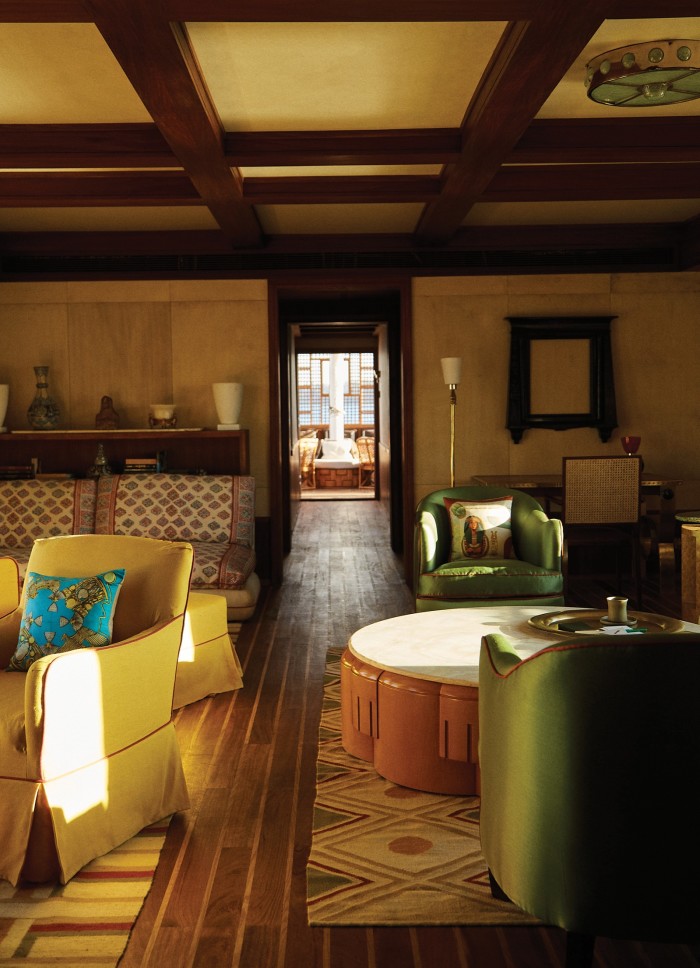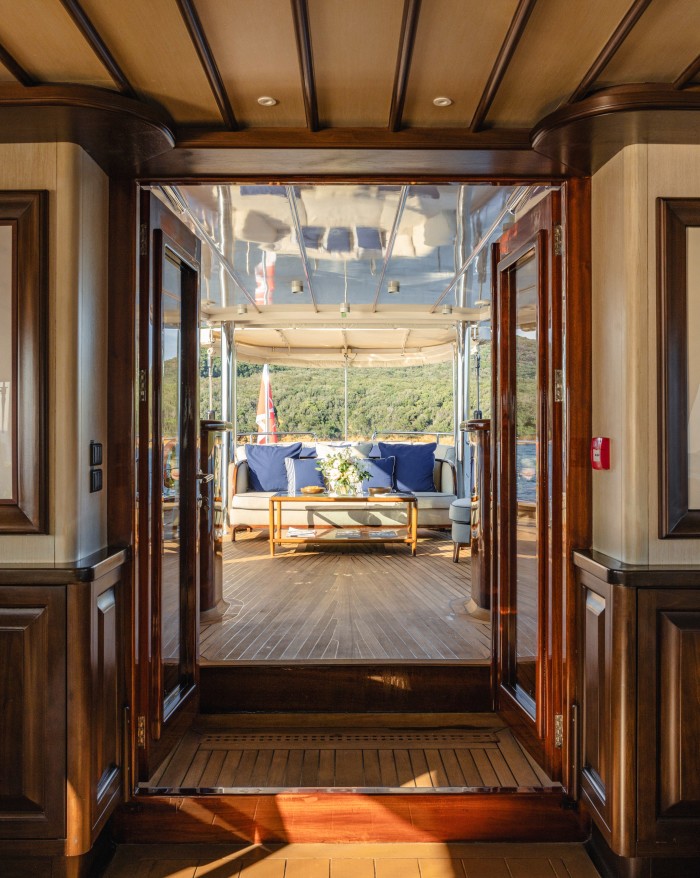Five ways to set sail in 2024

Roula Khalaf, Editor of the FT, selects her favourite stories in this weekly newsletter.
Liveaboard bliss in Indonesia
Komodo: 30 years ago you could rock up and drop anchor in solitude – just you, your boat, and a handful of rangers on the island, managing the populations of the famous dragons from which this part of the Indonesian archipelago takes its name. These days there’s a full-blown port, a museum, and more than a few cruise ships. But this shouldn’t deter anyone from coming to what remains one of the most spectacular encounters with nature (the dragons aren’t the half of it). To do all of the nearby islands in traditional style, a phinisi sailing ship is the way forward; these run from the highest hi-luxe to your basic barebones dive boat.

The latest to enter the market is Celestia. Launched late last year, handbuilt in Sulawesi, with seven ensuite cabins, multi-level outdoor spaces, a full staff and all the dive-snorkel-watersports kit you need in these parts, it’s an ideal charter for large families or groups of friends who want multi-generational, multi-fitness level diversions. June is prime Komodo season; in the autumn, Celestia moves north and east with the winds, to the Spice Islands. celestiayacht.com, from $11,500 per night for 14
A history deep-dive on the Turkish Riviera

The gulet is the seagoing holiday of choice on the Turkish riviera, and Salamander Voyages is one of the better-known specialists; Peter and Jenny Cooke founded their company in 2003 with one boat and have chartered her for an average of 25 weeks a year since. These days, Salamander operates 10 gulets across Greece, Montenegro and Croatia; but Turkey remains close to the hearts of the family of five that still runs this show. In June they’re inaugurating a new “history voyage” out of Bodrum harbour.


The seven-night itinerary starts at Bodrum Castle, built on the ruins of ancient Halicarnassus, and sails south-west to Gümüşlük (ancient Myndos), the 3,000-year-old city of Knidos – occupied variously by Carians, Greeks, Romans, Byzantines and Arabs, partially destroyed by an earthquake 1,300 years ago, it’s currently undergoing restoration – and dropping anchor at Sedir Adasi, aka Cleopatra Island. Like all Salamander itineraries, this one is all-inclusive; not a single extra tagged on when you disembark back in Bodrum. salamandervoyages.com, from £1,662.50 per person for seven nights
Egypt through the ages aboard Yalla Nile

Egypt in general, and cruising the Nile in particular, has exploded in popularity over the past few years; the intersection of culture, history and glamour, and the cruises offering a panoply of itineraries and styles, draw aspiring explorers of all types. At the top end of the spectrum, and new to the scene here, is Yalla Nile, a 50-metre traditional dahabiya, the two-masted riverboats that have sailed the Nile for centuries (similar ones can be found depicted on the walls of Pharaohs’ tombs). The boat’s design is the work of Tarek Shamma, the Egyptian architect and furniture designer known for his years working with David Chipperfield and his collaborations with Christian Louboutin. His signature style mines his country’s multifarious aesthetic periods, from early-dynastic to 20th-century modern, with Coptic and Ottoman references in the mix.


The six ensuite cabins, staggered over two levels, evidence this beautifully, from custom Egyptian kilim carpets to the master suite’s trompe l’oeil landscape – made by Greek artist Athan Mytilinaios using the traditional Egyptian appliqué technique of khayamiya – to the vintage Christofle silver tea and coffee service. Itineraries can be customised along the journey, but the standard Luxor-to-Aswan stops – Edfu and the acropolis at El Kab, Kom Ombo – are not to be missed. And the Agatha Christie fantasy fulfilment comes with a nice feel-good factor: all operating profits are donated to the Magdi Yacoub Heart Foundation and The Littlest Lamb, a Cairo-based charity that houses and educates orphans. yallanile.com, contact for individual itineraries and prices
The Adriatic’s other side: undiscovered Albania

Borgo Santo Pietro is that rare thing: a Tuscan hotel that’s somehow off the beaten track, a super-indulgent escape that somehow succeeds in weaving a convincing sense of its essential rusticity into the experience. Owners Claus and Jeanette Thottrup brought aspirations to recreating that same authenticity when they launched Satori, their 42-metre, five-cabin schooner, in 2017. Its vintage 20th-century patina is enhanced by details imported from Tuscany: the Thottrups’ 100 per cent organic beauty product line, Seed to Skin, is in all the cabins; some of the produce served on board comes from the vast kitchen gardens there, too.


This summer, Satori will move into the Adriatic for an eight-day itinerary that traces a route from Sarandë, just north of Corfu, up the coast to the ruins and amphitheatre at Butrint, a first-Greek then-Roman trading outpost that layers 1,000-plus years of conquest and dominion into one archaeological site. Then to the fortified castle of Porto Palermo, on a tiny peninsula that reaches into an only slightly larger bay; and the crystalline waters of Vlorë, with some of Albania’s most famous beaches. It’s only about 250 kilometres from Puglia, but a world-away experience, a Mediterranean immersion of a different kind. satoriyacht.com, €110,000 a week for 10 guests, excluding VAT and APA
Rwanda’s new lady of the lake

Rwanda is known as Destination Great Apes; it has the chimpanzees in Nyungwe, and the gorillas in Volcanoes National Park. The usual means of connecting a safari in each is either a punishing day-long drive on pitted roads, or a thrilling but eye wateringly-priced helicopter transfer. Mantis, a small hotel-lodge collection operating across southern Africa, has just launched a compelling third option: the Kivu Queen uBuranga, the first luxury houseboat on Lake Kivu.

The 10 cabins – six standard and two deluxe – all have their own bathrooms, while the two executive suites enjoy extra space in the private terraces and their own lounge and bar. Interiors are spare, letting the views out the floor-to-ceiling picture windows take centre stage. The two- and three-night sailings, from south to north or vice versa, make stops at Kivu’s various islands for hiking and bird watching. mantiscollection.com, from £1,180 per person
Comments